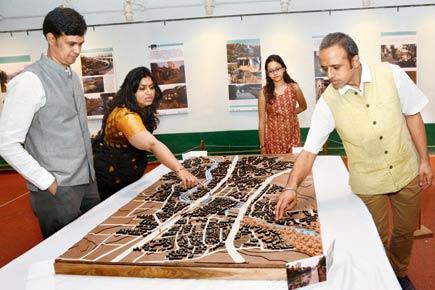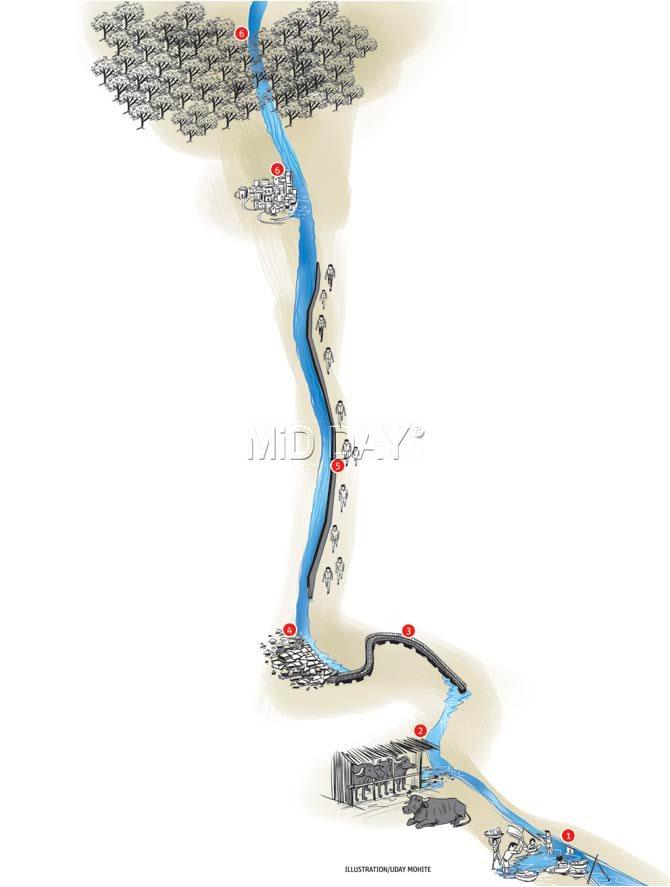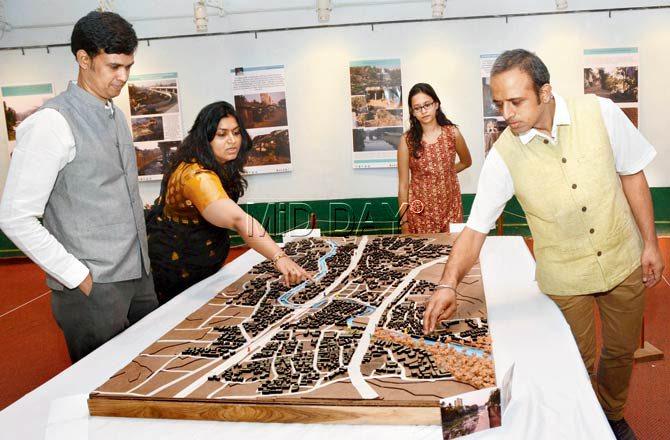Indira Bhende, the first Dahisar resident to initiate a campaign to save the urban river, was supported by 3D models by participating architects at a two-day community workshop that kicked off on Thursday, hosted by five organisations at the Maharashtra Nature Park (MNP) in Dharavi

Indira Bhende’s collection of photographs reveal the dismal tale of the Dahisar River’s decline from a thriving water body to gutter-like state. A 1943 painting by Sawlaram Haldankar shows a bridge built by the Portuguese over it. The pastoral setting is contrasted by modern-day scenes of the trash-chocked river that form exhibits at a two-day community workshop that kicked off on Thursday, hosted by five organisations at the Maharashtra Nature Park (MNP) in Dharavi. Bhende, the first Dahisar resident to initiate a campaign to save the urban river, was supported by 3D models by participating architects.

ADVERTISEMENT
The “dialogue on the future of Mumbai’s rivers” included hosts MNP, Water Environs, River March, National Environmental Engineering Research Institute (NEERI) and the Indian Habitat Forum (INHAF).

(L - R) Ajay Nayak, Kimaya Keluskar, Apoorva Iyengar and Vikram Pawar of Water Environs with an architectural model of urbanisation on the banks of the Dahisar river. Pics/Satej Shinde
The workshop, titled Riverse, comes after the Rs 150-crore Dahisar revival project proposed by the area MLA Manisha Chaudhuri. The 12-km-long river, which originates from Tulsi Lake inside Sanjay Gandhi National Park, is clean until it exits the sanctuary’s boundaries. After that, a spell of pollutants is dumped into the river until it joins the Gorai Creek.
The budget was intended to transform the River into a tourist attraction, with a mangrove park, boating and kayaking options, and a marine interpretation centre. In October 2015, chief minister Devendra Fadnavis urged the BMC to carry forward the river’s resuscitation plan. But stakeholders at the workshop were cynical of the state’s effort.
“The top down approach does not always work since there is no ownership of infrastructure in the city. We need to activate communities and immediate neighbourhoods,” said architect Kimaya Keluskar, founder member of Water Environs. Avinash Kubal, deputy director of MNP, said, “Concrete walls built on either side of the river can kill it. Rather than just engineering methods, we also need to come up with biological systems as solutions.”
Led by the Waterman of India Rajendra Singh, the workshop saw the participation of local representatives from institutions and settlements along the riverbanks, including Sr Shalini Sebastian from Pushpa Vihar, a leprosy colony, and Rajkumar Singh Thakur, the owner of a tabela in Daulat Nagar. The dialogue between citizens and MLA Pravin Darekar was intended to provide solutions to fight pollution for each segment of the river, and not derive a homogenous solution. “Take the case of the Sabarmati. While the river has been beautified, the people who lived along its banks have been displaced. A proposal that looks at propelling tourism is disconnected from the communities and the need to cleanse water,” said Keluskar.
To this effect, Dahisar River has been divided by Water Environs into six parts - the dhobi ghats, informal settlements, tabelas, the flyover, the promenade and the Dahisar gaothan - in order to address each area’s specific issues. Tabela owner Thakur’s solution, for instance, is to send the dung generated by his 2,500 cattle to a village in Junnar, where it is converted into biogas. Several other tabela owners choose to dump the dung into the river.
But, why focus on Dahisar River, and not on the infamous Mithi, was a question on several minds. “Everyone talks about the Mithi, and many plans have been proposed for it, but in vain. With Dahisar, we still see hope, since it is not as badly off,” said architect Ajay Nayak of Water Environs.
The workshop concluded with the Declaration for Revival of Mumbai’s Rivers, a plan which participants said will be made public next week.
 Subscribe today by clicking the link and stay updated with the latest news!" Click here!
Subscribe today by clicking the link and stay updated with the latest news!" Click here!







